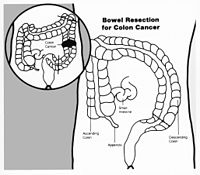
Photo from wikipedia
Background For liver cancer patients, the occurrence of postoperative complications increases the difficulty of perioperative nursing, prolongs the hospitalization time of patients, and leads to large increases in hospitalization costs.… Click to show full abstract
Background For liver cancer patients, the occurrence of postoperative complications increases the difficulty of perioperative nursing, prolongs the hospitalization time of patients, and leads to large increases in hospitalization costs. The ability to identify influencing factors and to predict the risk of complications in patients with liver cancer after surgery could assist doctors to make better clinical decisions. Objective The aim of the study was to develop a postoperative complication risk prediction model based on machine learning algorithms, which utilizes variables obtained before or during the liver cancer surgery, to predict when complications present with clinical symptoms and the ways of reducing the risk of complications. Methods The study subjects were liver cancer patients who had undergone liver resection. There were 175 individuals, and 13 variables were recorded. 70% of the data were used for the training set, and 30% for the test set. The performance of five machine learning models, logistic regression, decision trees-C5.0, decision trees-CART, support vector machines, and random forests, for predicting postoperative complication risk in liver resection patients were compared. The significant influencing factors were selected by combining results of multiple methods, based on which the prediction model of postoperative complications risk was created. The results were analyzed to give suggestions of how to reduce the risk of complications. Results Random Forest gave the best performance from the decision curves analysis. The decision tree-C5.0 algorithm had the best performance of the five machine learning algorithms if ACC and AUC were used as evaluation indicators, producing an area under the receiver operating characteristic curve value of 0.91 (95% CI 0.77–1), with an accuracy of 92.45% (95% CI 85–100%), the sensitivity of 87.5%, and specificity of 94.59%. The duration of operation, patient’s BMI, and length of incision were significant influencing factors of postoperative complication risk in liver resection patients. Conclusions To reduce the risk of complications, it appears to be important that the patient's BMI should be above 22.96 before the operation, and the duration of the operation should be minimized.
Journal Title: BMC Medical Informatics and Decision Making
Year Published: 2021
Link to full text (if available)
Share on Social Media: Sign Up to like & get
recommendations!